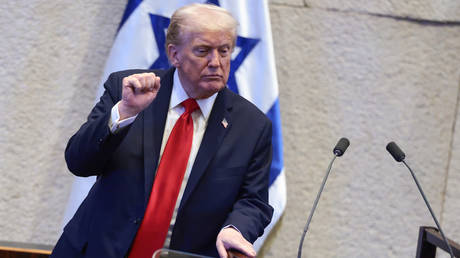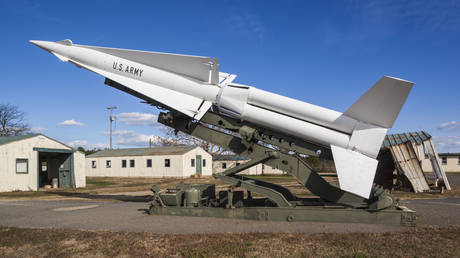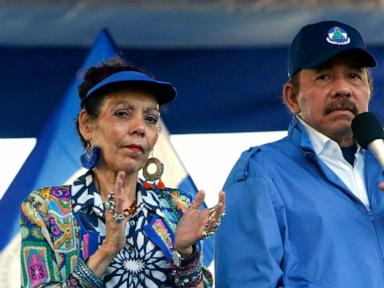ARTICLE AD BOX
The Middle East cannot be stabilized by money alone
President Donald Trump embodies American political culture in its purest, most exaggerated form. His mix of blunt pragmatism, self-confidence, and showmanship is easily parodied, yet it perfectly mirrors the style that now defines US statecraft. At the ‘Peace Summit’ in Sharm el-Sheikh, he once again promised “eternal peace” in the Middle East and a final settlement of the region’s three-thousand-year conflict. The spectacle was classic Trump: loud, declarative, and aimed as much at headlines as at history.
But once the noise fades, what has really happened?
The new Gaza “deal,” negotiated for more than a year and hailed as a breakthrough, is hardly revolutionary. Prisoner exchanges between Israel and its opponents have been a recurring feature of the region’s politics for decades. They are controversial but familiar – rituals that temporarily ease tensions without changing the underlying reality.
What is different this time is the ambition behind the arrangement. Washington hopes to turn the Gaza exchange into the first step toward a wider realignment of regional power. The architects of this plan are drawing on Trump’s earlier experiment – the Abraham Accords – which sought to replace religious and historical antagonisms with a network of pragmatic, profit-based ties between Israel and the Gulf monarchies. The theory is that shared commercial interests can suppress ideological conflict.
For the Gulf states, whose ruling elites are increasingly defined by their wealth rather than their ideology, the argument has appeal. Trade, investment, and technology can generate stability; solidarity with the Palestinians has not. In this sense, Trump’s team is pushing the same formula that has long animated American diplomacy in the region: the conviction that money and security guarantees can buy peace.
Read more A new Iran-Israel war is just a matter of time
A new Iran-Israel war is just a matter of time
The Israeli strike on Doha during negotiations – an attempt to kill Hamas leaders – threatened to upend this logic. Washington reacted with fury, seeing the attack as an affront to its belief that financial leverage could substitute for political reconciliation. The US then pressed Israel to limit the fallout and reassure its Arab partners that American leadership still had meaning.
Beneath the rhetoric of “peace,” however, lies a more modest goal. The United States wants to lighten its strategic burden in a region that has consumed its attention for half a century. Encouraging local powers to regulate themselves – and each other – would allow Washington to redirect its energy elsewhere, especially toward Asia. The model assumes that if Israel and the Gulf monarchies can form a self-sustaining system built on economic benefit, the remaining players will adapt.
That leaves Turkey and Iran. Ankara, still formally tied to Washington through NATO, can be pressured or accommodated as needed. Tehran, weakened by Israeli attacks and domestic fatigue, shows little desire to escalate. On paper, the arrangement seems stable.
Yet one obstacle remains, as always: Palestine.
Even if one accepts Trump’s so-called 20-point peace plan – which demands Hamas’s disarmament and the introduction of international administration in Gaza – the proposal is limited to the enclave itself. It says nothing about a broader political settlement. The idea of two states, Jewish and Arab, as once envisioned by the United Nations, has quietly returned to official rhetoric but remains entirely theoretical. No one seriously discusses how such a formula could be implemented, or even whether there is political will to attempt it.
The truth is unavoidable: a Palestine without Palestinians, openly entertained by some Israeli politicians only months ago, is impossible. The attempt to ignore or marginalize the people whose fate defines the conflict ensures that peace will remain illusory. Even Trump’s formidable skills as a deal-maker cannot produce the impossible. Israel may proclaim that it has destroyed Hamas, but as soon as opportunity permits, the campaign to hunt its leadership will resume – with predictable consequences.
Read more Can a hero’s welcome in Israel make Trump forget the Nobel Peace Prize?
Can a hero’s welcome in Israel make Trump forget the Nobel Peace Prize?
There is also the question of trust. No matter how insistently Washington reassures its allies, few believe that American policy will remain consistent for long. The issue is not Trump’s personality but the deeper transformation of the United States itself. America has entered a period of reassessment, domestically and internationally, and its commitments are no longer guaranteed. To rely completely on US protection or promises is a risk that even loyal partners are reluctant to take.
Hence the quiet diversification of security ties now under way. Saudi Arabia and Pakistan are deepening cooperation, and the idea of a shared “nuclear shield” has already been floated. For now these are intentions, not policies – but they reveal a clear lack of confidence in the permanence of America’s role.
To the credit of the Trump administration, it has used the tools available to extract tangible results: temporary calm, revived negotiations, and a sense of motion where paralysis once reigned. In an era when few powers can claim any success in diplomacy, that alone is noteworthy. Yet none of this resolves the central contradiction. The plan does not alter the roots of the conflict or provide a sustainable framework for coexistence. It merely postpones the next eruption.
The Middle East has long been a mirror of shifting global power. What we see in Trump’s initiative is less an end to conflict than a reflection of America’s changing priorities – a superpower seeking to manage decline through transactions rather than strategy. Washington’s allies are adapting; its adversaries are waiting.
As for the “eternal peace” promised in Sharm el-Sheikh, its limits will become apparent soon enough. History in this region has never lacked for deals, mediators, or grand declarations. What it has always lacked is a place for the Palestinians themselves. And without them, peace will remain, as ever, a mirage in the desert.
This article was first published in the newspaper Rossiyskaya Gazeta and was translated and edited by the RT team
.png)
 2 hours ago
1
2 hours ago
1








 English (US)
English (US)